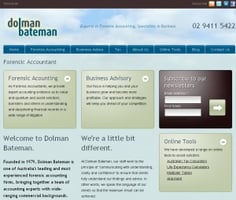We have just upgraded our web hosting to a VPS cloud through www.vps.net and the website is now...
A Two Speed Economy - What does it mean?
Prior to last weeks GDP figures for the March 2011 quarter, I had been talking to our clients, business people, bankers about how they felt the economy was going and the answer unanimously was pretty tough. Many business across a wide range of industries were finding cashflow and trading conditions difficult.
The housing sector which is driver for discretionary consumer demand is under a number of stresses. Housing prices are flat if not falling depending upon which data you rely. Housing prices allegedly fell between 0.2% and 1.2% in Sydney and even greater margins in Perth and the Sunshine Coast. Bank lending has also slowed with the growth in home lending the lowest in a decade.
The high Australian dollar is also having and looks like continuing to have a negative effect of the economy. The most obvious contenders are the exporters - suddenly exporters have taken a price cut or their products are no longer competitive. Wine, manufacturing, rural exporters, education and tourism are all adversely affected by the increase in the Australian dollar. The mining industry is cushioned from the effect of the high dollar by record commodity prices.
The Australian Bureau of Statistics (ABS) pointed to the floods in Queensland and Victoria as the reasons for the fall in GDP. The floods destroyed houses, businesses, transport links and infrastructure throughout Queensland. But did that effect the way businesses in Sydney were feeling?
Is it all doom and gloom?
The government still has a number of weapons in its economic arsenal. Unlike many economies in the world like US & Japan, we still have positive interest rates. The Reserve Bank (RBA) could reduce interest rates to help the economy if the low or negative growth continues. In the USA and Japan, the official interest rates are zero and they cannot reduce rates further. The RBA is wary of reducing rates for fear of inflation and generating unsustainable housing speculation. The Reserve Bank could reduce rates and combined with the Big 4 tightening their lending criteria (80% LVR for example), the problems associated with lower interest rates and housing prices could be mitigated.
The government still has a significant capacity to borrow and inject money directly into the economy. Big government programs should be spent on improving the Australia's infrastructure and long term productive capacity. The difficulty with infrastructure programs is that the expenditure is distributed to a small group of large companies that specialise in infrastructure projects. The benefit slowly trickles through the economy.
The government has tried to embark on expansionary programs that distribute funds with a wider spread. The Building an Education Revolution" program as an example. The objective of this program was not to build school halls in every school but to provide employment quickly to builders in their communities as quickly as possible following the fallout from the GFC. The construction industry and many others were in danger of collapse immediately following the GFC. An added benefit of the program was that schools received new halls. The problem with the programs with a wider distribution is that the programs have less oversight and subject to allegations of waste.
The problem that Australia faces at present is a two speed economy, where the mining sector is growing at an amazing rate but the rest of the economy is one another track. Are the two speeds - Forward and Reverse?
The mining sector is requiring greater resources. Skills Australia in a recent report forecast that Australia will need an additional 2.4 million skilled workers for the already announced resource projects in Australia. The danger is that in order to shift the resources (particularly labour) to the mining sector they will have to come at a cost to the other sectors in the economy. There is an argument currently that in order to release the labour to the mining industry, businesses in other sectors will have to go broke and the catalyst would be increases in interest rates.
Businesses in Australia are currently subject to a number of pressures including:
- the threat of higher interest rates and the follow on effect on demand.
- the effect of a high Australian dollar reducing our international competitiveness that we spent the last 20 years building.
- the rise of the internet especially on retail businesses. This represents both a threat and an opportunity.
It will be interesting to see whether Australia will have a forward/reverse economy or just a fast/slow economy.

